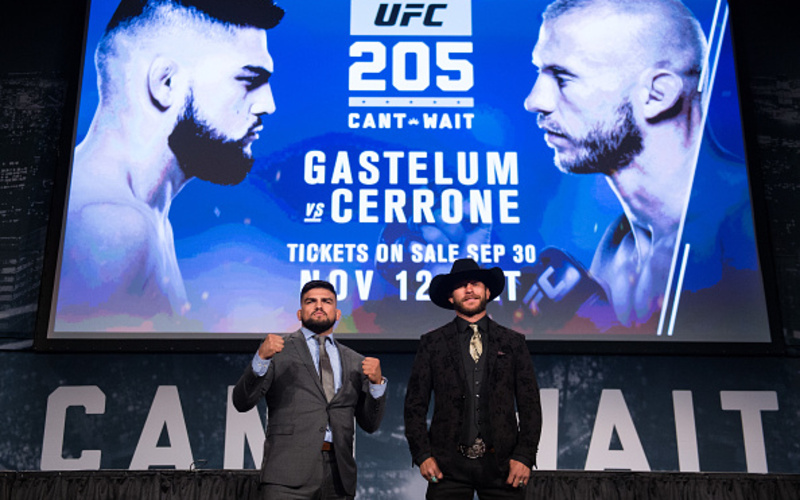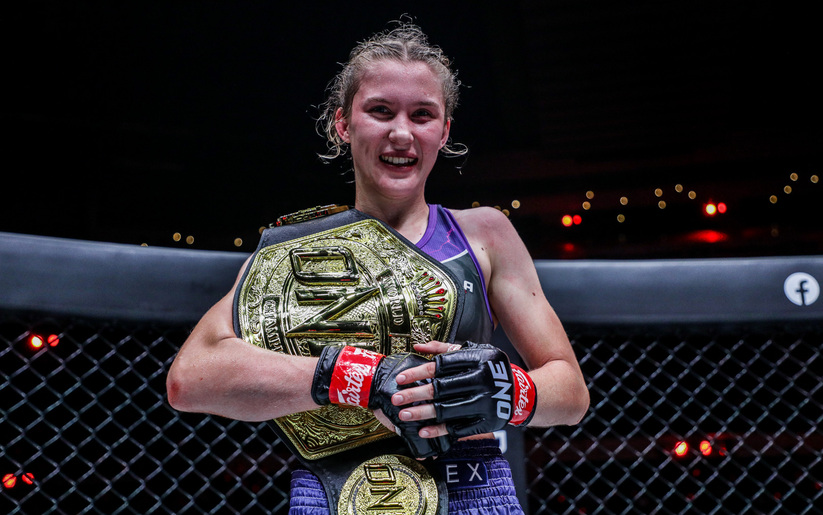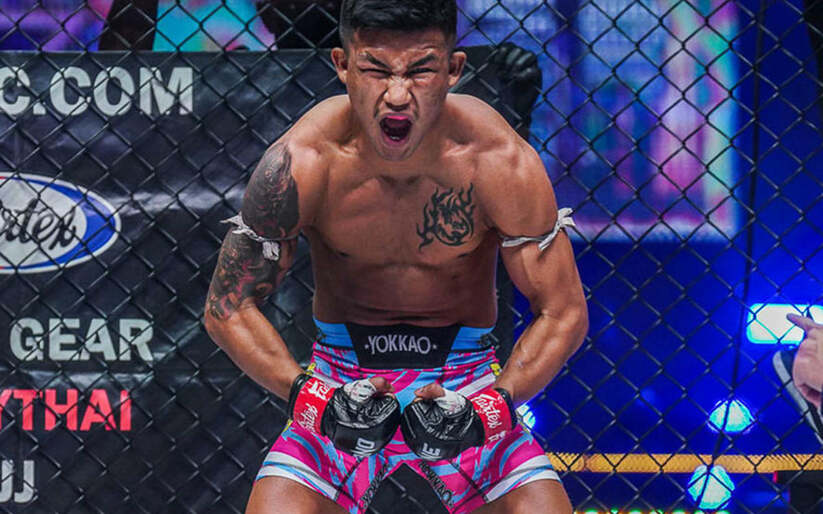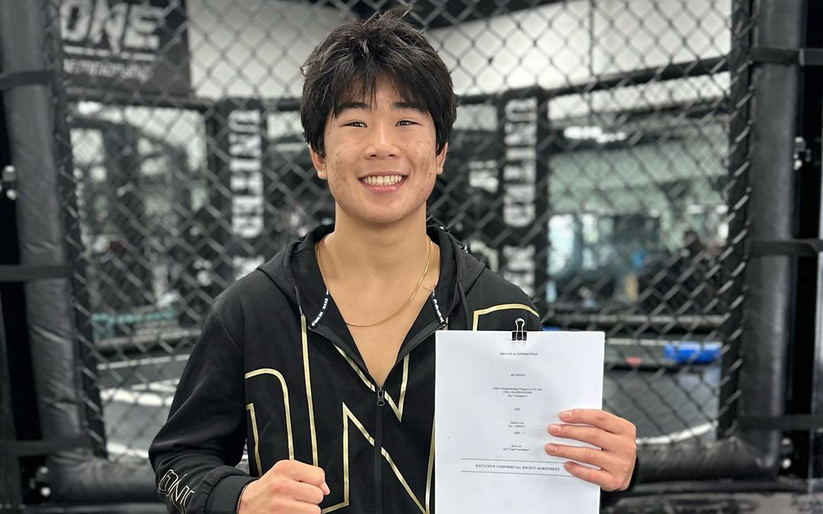Donald Cerrone and Kelvin Gastelum are being paired up at UFC 205 for a bout nobody would have expected to see back in June of 2015. Gastelum had just returned to the middleweight division after missing weight–for the second time in three fights–and suffering his first-ever loss at the hands of Tyron Woodley. Cerrone, meanwhile, was riding an eight-fight win streak and gearing up for a clash with then champ Rafael Dos Anjos, for the lightweight strap. It is funny how much can change in a year.
A guide to UFC 205: Donald Cerrone vs. Kelvin Gastelum
Kelvin Gastelum: The Over-Achiever
Gastelum has exceeded all expectations placed on him since his stint on The Ultimate Fighter. Coming in as the youngest contestant in show history(21), he was the last pick for Team Sonnen. He would not only make his way to the finals, but would defeat the heavily hyped Uriah Hall. What followed was a five fight win streak, and steady improvement in each outing. Now at 25-years-old, he is still very much a work in-progress. The young wrestler, with a penchant for snatching necks, has slowly given way to a more measured, comfortable fighter on the feet.
A Technical Rebirth
The key to Gastelum’s success at welterweight lies in his improvements on the feet. And it is rare to see someone so big for the weight-class focus on volume, footwork, and accuracy, rather than seeking knockouts.
In an unusual change for a southpaw, Gastelum’s jab is the centerpiece of his entire game. Long gone are the days when he would dash across the cage winging overhand lefts. His jab is unusual for MMA, in that it is a searching weapon. In his recent bout with Johnny Hendricks, Gastelum did an excellent job of throwing 5-6 jabs for every left hand he threw. As a result he connected on his power punches at a higher percentage.
That is the inherent value of the jab. It is supposed to set-up the power shots. So many fighters in MMA learn to throw the classic 1-2, but then never use their jab to actually create an opening for the two to land. They simply throw out a jab, then immediately follow up with the cross. Gastelum uses his jab as a tester, to see if he has an opportunity to land the left.
Creating Openings
When it comes to following up on the jab, Gastelum has a few options.While he favors the 1-2, he will switch to an uppercut if his opponent is ducking. And if they are retreating, he will look to land a left kick to either the body or leg. He mixes up his targets with his left kicks, alternating between legs, body and head. All the great kickers use this to create openings. Luke Rockhold built his entire striking game around the body/head left kicks, and he’s had tremendous success.
Where Gastelum really shines is when he can get his opponents back up against the cage. He is not an ace at cutting of the ring, but he is doggedly determined. Gastelum has had great success in simply walking his man down. Eventually they all put themselves against the fence. Once there he mixes his right hook and left uppercut very well. It is a pretty common pairing for fighters, but it is noteworthy that he uses it so well. Gastelum will constantly vary his punches and make his opponents unsure of what is coming next. As a result he can flurry, and land, better than most.
His right hook in particular, is responsible for much of the damage Gastelum inflicts.
Defensively Aware
Gastelum may not strike many as a defensive wiz, but he has a lot of traits that others lack. He is constantly aware of the fact that there might be punches coming back at him. It’s not mind blowing stuff. But when you watch him unload on guys, you will see him waiting for a return. As soon as he sees it coming, he will lean out in what Eddie Alvarez dubbed the “rock back.” He takes his head out of danger, then comes back with a counter as his opponent recovers their swing.
The Flaws of Boxing
Gastelum has a style that is built on boxing principles. He builds everything off the jab, cuts the cage with his feet, and focuses on head movement for defense. He mixes his wrestling, kicks, and clinching in very well. But at it’s core, Gastelum’s style revolves around principles prevalent in boxing.
The reason head movement is not as prevalent in other combat sports is because when kicks are introduced, it becomes very risky. Gastelum has struggled to defend kicks at all heights throughout his career. Because he leans away from blows, his torso and legs remain rooted in place. As a result, Gastelum will often take a few kicks, then abandon his head movement for fear of getting kicked upside the head.
Gastelum tends to pressure with his feet, as opposed to trying to herd guys with circular strikes. When you fight in a cage instead of a ring, it is more difficult to trap a fighter along the fence. Woodley and Neil Magny both had success by constantly circling away from Gastelum.
The thing about Gastelum’s ring cutting ability is that it only works when it works. If his opponent refuses to stay on the cage, Gastelum can be drawn from stepping across the cage, to stepping towards his opponent. Woodley in particular circled out to Gastelum’s left for most of the fight. Gastelum would be frustrated into rushing after Woodley, and would get plastered with the right hand every time.
Finally while building off the jab is always an invaluable skill to have, without it Gastelum is noticeably less effective. Against Magny his lead hand was often being slapped away. In the Woodley fight, the constant circling of his opponent, coupled with his hand parries, left Gastelum again without an effective jab. And without them he was noticeably less aggressive, and less effective.
Donald Cerrone: The Constant Contender
Cerrone is often near the top of every fight fans must watch list. He has an exciting style, he fights at an almost continuous rate, and he wins an awful lot more than he loses. His personality embodies the “anyone, anywhere, anytime” mentality better more than any other fighter in the UFC. He will take opponent changes on short notice, he will step in on short notice, and as he has shown recently the he is more than happy to make the jump up to welterweight.
However, Cerrone has always had a certain stigma attached to his gunslinger mentality–he can’t win the big ones. Even with his laundry list of victories over some of the biggest names at lightweight, Cerrone has never won a major MMA title. And despite being ranked in the top ten for the better part of seven years, he has never seemed capable of making the jump from contender to champion.
After dropping his second fight to Dos Anjos, Cerrone seemingly abandoned the lightweight division in favor of greener pastures at 170. While that in of itself is not uncommon, I doubt even he would have predicted that he’d have so much success. From his shellacking of perennial contender Rick Story, to his beatdown of the iron jawed Patrick Cote, Cerrone has burst on to the welterweight title scene with an ease. While we have yet to see him against the biggest names the division has to offer, he has torn through two of the toughest outs at 170 pounds.
Right Place, Right Time
Cerrone has always been big for a lightweight. At six feet tall, and with a 73 inch reach, he has always had the body type capable of fighting at welterweight. However, it isn’t outside the realm of possibility to suggest that, if Cerrone had made the jump to 170 earlier in his career, it would have been a bad move. Not only was Cerrone constantly within spitting distance of a title shot at 155 pounds, but he also had a few technical quirks that may have left him wanting against the larger, heavier, men of the welterweight division.
As a lightweight, Cerrone was known for hard leg kicks, a wicked guard, and some pretty shoddy hands. He always seemed one shot away from throwing his range advantage out the window to brawl instead.
Deadly At Range
The key to Cerrnone’s success has always been range. He is not a terribly active striker, but he is a very accurate one. If given space to use his range, there are few who can match him. At a distance, Cerrone is most famous for his biting low kicks. He will often throw the lead leg kick with a skip or a switch. This is particularly effective against southpaws, who have their right leg in front. He is one of the few people in MMA to really commit to landing this kick regularly. It was some of his only effective offence against Nate Diaz.
If allowed to maintain range, “Cowboy” has a few other tricks that are worth mentioning. Cerrone’s right straight has always been a money shot. While his boxing game in general is definitely not his strong suit, Cerrone has done his fair share of damage using his right straight.
Misdirection
Playing with expectations is a big part of the Donald Cerrone game. He may not throw a lot of shots, but he likes to set-up the few he does. He will show punches to land a hard leg kick. They are not really combinations. The first part is not thrown with the intent to hurt, but it is unquestionably effective. That piston of a right straight serves to set up his right high kick. By throwing out the right hand as he kicks, Cerrone has baited a lot of guys into trying to parry the right hand as the kick sails around their guard.
That is not even going into his body kicks and stepping elbows. Cerrone really is a pleasure to watch when he gets going. But he is not an untouchable striker by any means.
He struggles when he is forced to punch on the back foot. His hands can get a little loopy when he is drawn into exchanging. This, and his lack of head movement, can lead to him eating shots in the pocket. However, Cerrone has utilized two techniques as of late to deter opponents from closing the distance.
The Threat of The Takedown
Cerrone has taken down all three of his opponents at welterweight. As they close the distance, he would be in on their hips. This increase in takedowns may be due to the fact that now that he is fighting larger opponents, Cerrone finds it easier to shoot on their hips. His guard may be famous, but his top control is just as good. His control from back mount in particular is notable.
Much like Alexander Gustaffson, Cerrone has used his reputation as a striker to his advantage. He plants the expectation of a striking match in their head, then takes them down. Once they are back up they become worried about committing to moving forward and risk being taken down again. This offers Cerrone what he really wanted in the first place–a striking match.
The Intercepting Knee
Instead of trying to throw looping punches at close range, Cerrone has adopted a different method. When his opponent steps in, he will look to meet them with a knee. This has been a huge part of his success in his recent fights.
Once his opponent has eaten a few knees closing the distance, they become less inclined to step in. Nobody likes being the instigator of their own pain. Once they take their foot off the gas, he is right where he wanted to be–fighting at range. It is a very simple idea to use negative reinforcement, to guide opponents towards your strengths. But Cerrone has become much more effective because of it. His punches are far more effective moving forward than they are going backwards, as I’m sure everyone remembers from the Rick Story fight.
Final Thoughts
This fight has the potential to favor either man, and it will come down to who controls the center. Gastelum likes to come forward behind his jab and apply pressure. Cerrone likes to stay out in the open and throw kicks. Cerrone struggles against pressure, Gastelum struggles against kickers. Whoever is able to control the center will be able to implement their game-plan, and both have struggled when forced on to the back foot.
Since moving to welterweight, Cerrone has dealt with every challenge with spectacular ease. Gastelum meanwhile has struggled against disciplined movers, but looked fantastic in his latest outing against Hendricks. The more he sticks to a disciplined game-plan, the better his chances are against “Cowboy.”
Cerrone is the favorite in this fight, and rightly so. His recent outings have certainly been more impressive. However, Gastelum is still very young in his career, and if he shows up like he did against Hendricks, he has the skill to shut Cowboy down. In a twist nobody saw coming back in 2015, the winner of this fight might well find themselves knocking on the door of a welterweight title shot. With Demian Maia waiting for the winner of Woodley/Thompson, and the talks of a GSP return, the welterweight title picture is looking better than ever. It is shaping up to be the division to watch in 2017.
We are really getting into the meat of this card now. Tune in to the next article for a look at Chris Weidman and Yoel Romero.
Main Photo:



